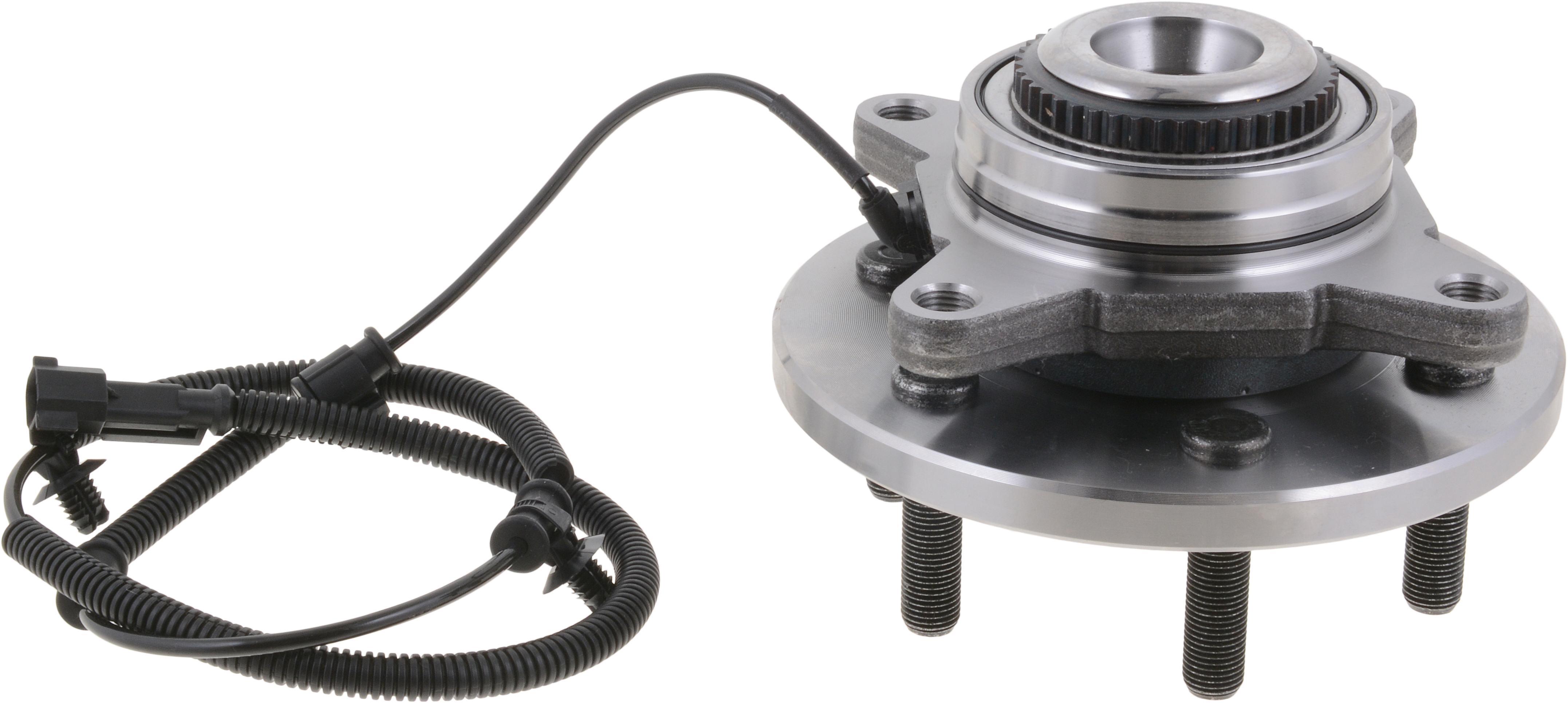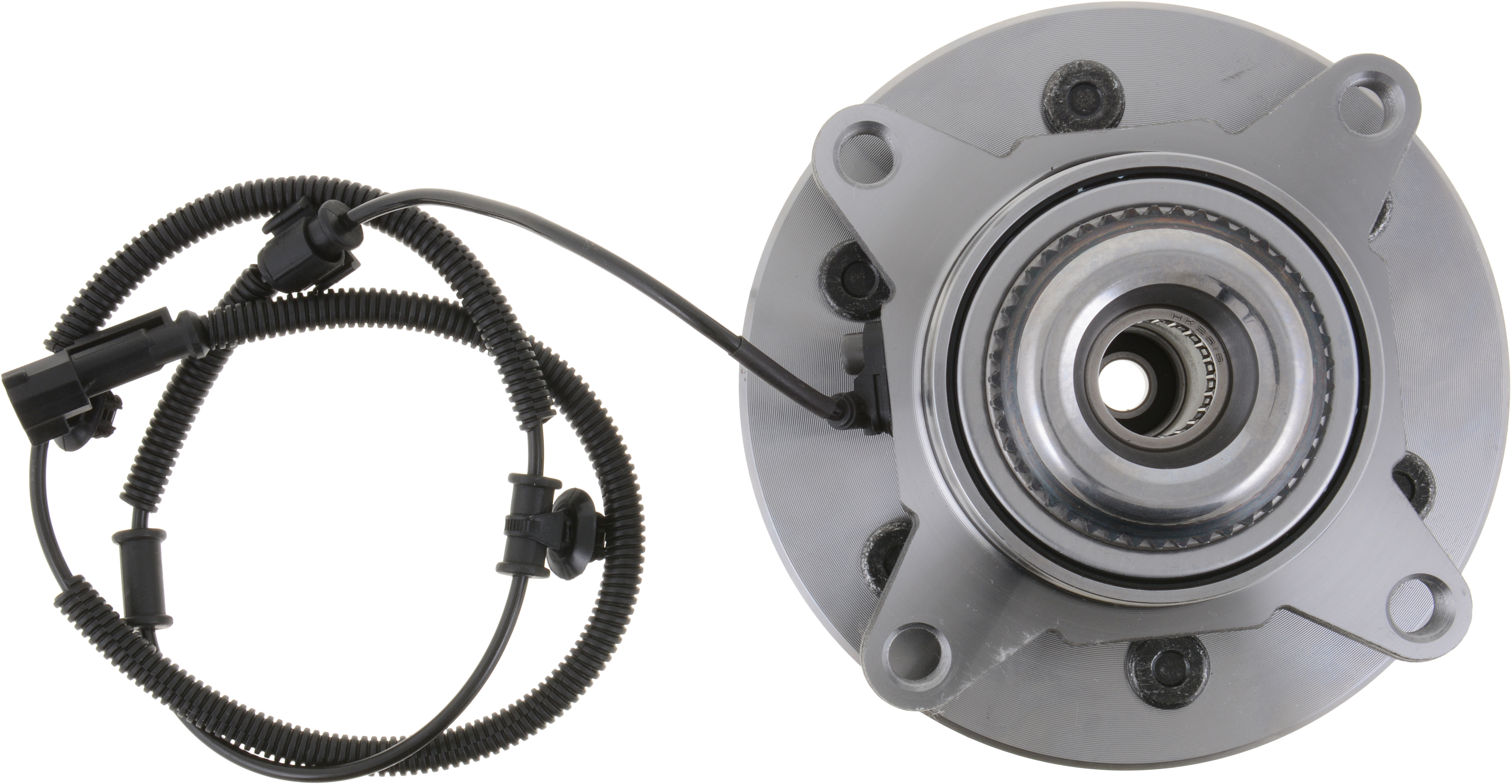Tech Tips
Using OE-Quality Hub Assemblies For Ford IWE-Equipped Trucks

What is the most complex wheel bearing hub unit on the roads today? You might think it would be a supercar or electric vehicle. But, it is on the Ford F-150 equipped with 4WD. In 2004, Ford introduced the Integrated Wheel End (IWE) that could disconnect the hub from the axle. This function adds several new components not found on the typical hub unit.
IWEs first hit the market in 2004 on the F150, Expedition and Lincoln Navigator. The technology changed the location of the traditional locking hub. Instead of placing the locking hub on the end of the spindle, engineers positioned the locking mechanism between the hub unit and the outer CV joint. The system allows the front wheels to rotate while the front axles do not move.
To accomplish this fuel-saving trick, IWE wheel bearing hub units have another level of complexity that has implications for technicians.

New Parts
When you pull a new BCA Bearings front hub unit for an IWE application out of the box, you will notice some parts not found in other hub units. The first thing you will see is a gear or splines on the inboard side of the hub unit. The gear’s splines match the one found on the end of the CV joint. The splines are precision machined to smoothly engage the clutch ring housed in the actuator. The gear on the hub unit is held in place using a manufacturing process called orbital forming. This process uses tons of force to roll the edge of the hollow spindle. This rolled edge holds the gear in place and sets the preload of the wheel bearings.
If you look inside the bore of the hub unit, you will notice two bearings. The first bearing is a needle roller bearing that supports the shaft. Next, near the flange and axle nut, is a sealed ball bearing.
The other thing you may notice is a seal around the hub unit that makes contact with the bore in the knuckle. This seal prevents water and debris intrusion into the area that houses the IWE actuator.
What you can’t see when looking at a new BCA hub unit for IWE applications are the metallurgy, materials and manufacturing processes. BCA’s first step in the manufacturing process is using clean, high-quality steel. This type of steel has fewer inclusions that can come to the surface when machined.
Parts are heat treated, and some are case-hardened. Heat treating is a precision process that achieves an ideal balance of hardness and durability for the parts of the hub unit.
The level of hardness depends on the component. For example, the gear that engages the IWE has a different heat treatment process than the rollers and races.
A BCA IWE hub unit has five seals. An economy-bearing manufacturer might cut corners when possible regarding the seals by using lower-quality rubber instead of nitrile. This can lead to contamination of the bearings and IWE mechanism.
The dimension tolerances of a replacement IWE hub unit are critical. If you look up the repair procedure, Ford has a procedure to measure the protrusion of the axle’s threaded end to the base of the bearing that supports the axle shaft. The minimum depth is 15.5mm. Installing the axle nut and tightening it without the proper depth of protrusion will damage the IWE gears and clutch ring.
What does this mean to technicians and counter professionals when it comes to servicing a truck like the Ford F-150? First, extra care must be taken when ordering and installing wheel-end components. Not using an OE-quality hub unit in favor of the least expensive option can be very costly to your shop.

Diagnostics
Diagnosing wheel-end noise complaints is more complicated with IWEs. A partially engaged IWE can cause noises similar to a damaged wheel bearing. The leading customer complaint will be clicking, ratcheting or grinding noises when the truck is in 2WD mode. In some cases, the noise will occur during acceleration, according to Ford TSB 20-2013.
The noise is caused when the IWE unit is partially engaged in the clutch ring that is not fully seated. This is typically due to a partial vacuum being applied to the IWE. Partial engagement can cause rapid wear to the gear splines on the CV joint and wheel bearing hub unit. If the unit has failed or there is no vacuum at the IWEs, the front axles will be connected to the wheels in 2WD. As a result, there might be increased noise levels and a decreased fuel economy.
Drivers may also complain of a less noticeable ticking or whining noise. This could be caused by damaged needle bearings inside the wheel bearing hub unit that allows the wheel to spin independently of the axle. Damage to these bearings inside the bore can occur when the axle is installed into the hub.
Parts like hub units are made to tight tolerances to help reduce rolling resistance so the fuel economy does not suffer. Selecting an economy hub unit that does not use the same technology or is made to the same standards as an OE-quality hub unit will impact wheel end operation and fuel economy.
With IWE hub units, there is no such thing as a good, better and best alternative. Due to the complexity and manufacturing processes, there is only room for OE-quality hub units. Taking a chance on an economy IWE hub unit can leave you with an unhappy customer.
